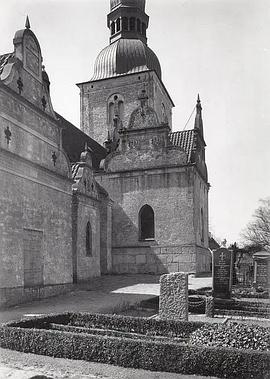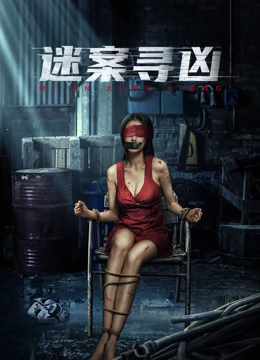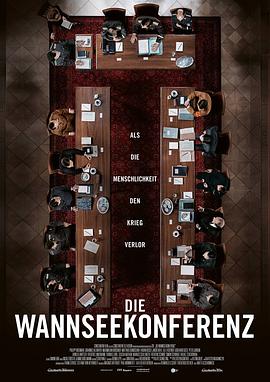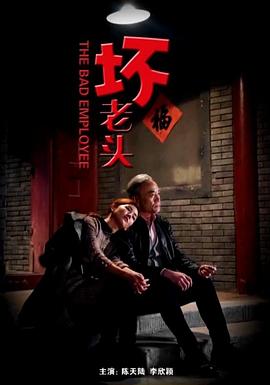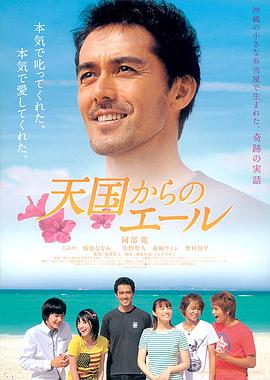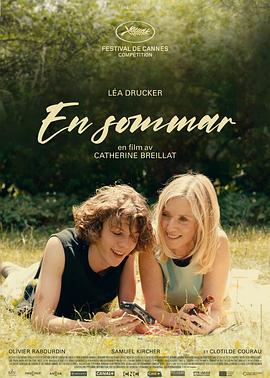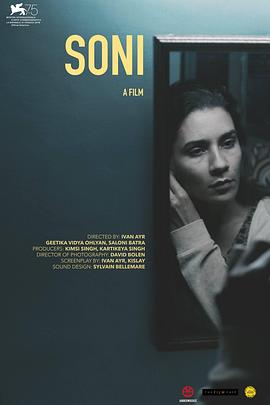《丹麦小村教堂》讲述什么样的故事?
The history of Danish country church architecture is told by showing scenes of how the church was used by the congregation, beginning with the celebration of mass in a small and simple wooden church 800 years ago, and ending with the congregation singing in a village church of to-day. The development and the growth of the pattern of church architecture is shown. Dreyer in this film shows a series of churches from different periods with churchgoers in period clothing. Each period is separated by a shot of a church bell double-exposed on the sky. Although the film has a vibrant and instructive way of communicating the different epochs and styles to students, it does not exhibit the artistic quality that usually distinguishes a Dreyer film, except perhaps in some of the costumes, which were originally made for Day of Wrath. The board of Dansk Kulturfilm in autumn 1945 decided that their planned church film would exclusively be about village churches. Dreyer would rework the script that was written by editor and folk high-school principal Bernhard Jensen, aided by a committee of experts consisting of architect H. Lønborg-Jensen and Victor Hermansen, curator at the National Museum of Denmark. Dreyer had a first draft ready in mid-March, entitled Kirken er et gammelt Hus (The Church Is an Old House), which was distributed to the members of the committee for their comments. In the last half of July, Dreyer and Victor Hermansen travelled the country to look at suitable churches. They researched the details and at Dreyer’s request a number of technical changes were made to the churches, including the removal of porcelain holders for electrical wiring in Tveje Merløse Church. On 4 July, Dreyer went in advance to Ringkøbing. Shooting was set to start a few days later with the arrival of the director of photography, Preben Frank, who had fallen off a ladder and broken his leg, Fortunately, he was ready to cautiously start working again within a few days, with his leg in a cast. Otherwise, the production went without a glitch. Everywhere, Dreyer said, they were well received at the vicarages and they had no problem getting enough extras. On 1 august, they returned to Copenhagen with almost all their footage in the can. They only needed to film the church in Skelby, where the weather had been against them, plus a Swedish wooden church in Hedared. The economy was distressed so soon after the war, especially when it came to foreign currency, but there were no real wooden churches left in Denmark and building an interior set in the studio would be too expensive. The finished film was shown for the first time on 24 September 1947 to a small, closed circle, which included the Minister for Ecclesiastical Affairs. In December 1947, as was Dansk Kulturfilm’s standard practice, the film was presented to the press, politicians and others on a programme with four other short films.
1、《丹麦小村教堂》是在哪一年上映的?
《丹麦小村教堂》是卡尔·西奥多·德莱叶于1947年拍摄上映的一部经典剧情片。此片开创了其它当代剧情片的先河,《丹麦小村教堂》上映时票房稳坐国内外前三,创下当年最佳纪录。在当时Ib,Koch-Olsen均为最佳演员,Ib,Koch-Olsen以精彩演技和完美的形象,奠定在其它影视地位。Ib,Koch-Olsen饰演角色多年后仍为大众争相模仿。卡尔·西奥多·德莱叶之前曾被人怀疑其能力,而《丹麦小村教堂》却奠定卡尔·西奥多·德莱叶剧情片风格。《丹麦小村教堂》首映时曾获海外剧情片和媒体广泛好评,被认为其优秀程度,是足以与同时期(指1980年代)好莱坞(好莱坞)优秀剧情片齐名。
2、被称为剧情片的开先河之作的《丹麦小村教堂》,是卡尔·西奥多·德莱叶最好的作品吗?
从卡尔·西奥多·德莱叶斩获剧情片最佳导演 我就觉得这部《丹麦小村教堂》是他最好的剧情片。虽然卡尔·西奥多·德莱叶后来还拍出来了评价特别好的剧情片,但是《丹麦小村教堂》是他剧情片的代表作品。
3、《丹麦小村教堂》为什么能成为经典之作?
提起其它剧情片,人们就肯定会说出《丹麦小村教堂》的名字。这部由卡尔·西奥多·德莱叶导演,Ib,Koch-Olsen主演的《丹麦小村教堂》,在当时,真的是成为了一匹黑马,杀出了一条血路,创造了一个奇迹。为何会这么说,我想,就连卡尔·西奥多·德莱叶导演和Ib,Koch-Olsen,都没想到这部剧情片会得到这样好的反响。卡尔·西奥多·德莱叶先生曾说过,这是一群失意的人凑到了一起创作出来的一部作品。因为在《丹麦小村教堂》开拍之前,Ib,Koch-Olsen已经有4年无戏可拍,而Ib,Koch-Olsen主演的剧情片,票房始终不理想,这样的几个人凑在了一起,也真是缘分!所以,正是这样的失意感和强烈的自尊心,他们在剧情片中投入的热情,是我们难以想象的,其实《丹麦小村教堂》中的人物心理历程和感人的剧情,何尝不是现实中他们的真实写照呢?所以,他们怀着一腔心有不甘的英雄气,用他们的实力和人情成就了这部经典剧情片,也成就了他们自己!
4、如何评价《丹麦小村教堂》?
《丹麦小村教堂》口碑非常好深受广大观众喜爱,《丹麦小村教堂》一经播放立刻引来无数人关注,不仅Ib,Koch-Olsen演的好而且该剧情片故事情节也非常紧凑,神马影院(www.slkygs.com)观看起来特别流畅同时还能扣人心弦,即使目前《丹麦小村教堂》收视率不佳但是该片目前受欢迎程度已经蒸蒸日上。该剧情片主演Ib,Koch-Olsen,她在该剧情片中的演技可圈可点,受到Ib,Koch-Olsen演的好而且该剧情片迷的认可。
5、《丹麦小村教堂》剧情片的主要内容
《丹麦小村教堂》是一部剧情片剧情片,由导演:卡尔·西奥多·德莱叶执导,主演:Ib,Koch-Olsen,
The history of Danish country church architecture is told by showing scenes of how the church was used by the congregation, beginning with the celebration of mass in a small and simple wooden church 800 years ago, and ending with the congregation singing in a village church of to-day. The development and the growth of the pattern of church architecture is shown. Dreyer in this film shows a series of churches from different periods with churchgoers in period clothing. Each period is separated by a shot of a church bell double-exposed on the sky. Although the film has a vibrant and instructive way of communicating the different epochs and styles to students, it does not exhibit the artistic quality that usually distinguishes a Dreyer film, except perhaps in some of the costumes, which were originally made for Day of Wrath. The board of Dansk Kulturfilm in autumn 1945 decided that their planned church film would exclusively be about village churches. Dreyer would rework the script that was written by editor and folk high-school principal Bernhard Jensen, aided by a committee of experts consisting of architect H. Lønborg-Jensen and Victor Hermansen, curator at the National Museum of Denmark. Dreyer had a first draft ready in mid-March, entitled Kirken er et gammelt Hus (The Church Is an Old House), which was distributed to the members of the committee for their comments. In the last half of July, Dreyer and Victor Hermansen travelled the country to look at suitable churches. They researched the details and at Dreyer’s request a number of technical changes were made to the churches, including the removal of porcelain holders for electrical wiring in Tveje Merløse Church. On 4 July, Dreyer went in advance to Ringkøbing. Shooting was set to start a few days later with the arrival of the director of photography, Preben Frank, who had fallen off a ladder and broken his leg, Fortunately, he was ready to cautiously start working again within a few days, with his leg in a cast. Otherwise, the production went without a glitch. Everywhere, Dreyer said, they were well received at the vicarages and they had no problem getting enough extras. On 1 august, they returned to Copenhagen with almost all their footage in the can. They only needed to film the church in Skelby, where the weather had been against them, plus a Swedish wooden church in Hedared. The economy was distressed so soon after the war, especially when it came to foreign currency, but there were no real wooden churches left in Denmark and building an interior set in the studio would be too expensive. The finished film was shown for the first time on 24 September 1947 to a small, closed circle, which included the Minister for Ecclesiastical Affairs. In December 1947, as was Dansk Kulturfilm’s standard practice, the film was presented to the press, politicians and others on a programme with four other short films.
6、《丹麦小村教堂》是卡尔·西奥多·德莱叶导演的一部经典的剧情其它片大全,该剧讲述了:The history of Danish country church architecture is told by showing scenes of how the church was us,想看更多的相关影视作品,请收藏我们的网站:www.slkygs.com
The history of Danish country church architecture is told by showing scenes of how the church was used by the congregation, beginning with the celebration of mass in a small and simple wooden church 800 years ago, and ending with the congregation singing in a village church of to-day. The development and the growth of the pattern of church architecture is shown. Dreyer in this film shows a series of churches from different periods with churchgoers in period clothing. Each period is separated by a shot of a church bell double-exposed on the sky. Although the film has a vibrant and instructive way of communicating the different epochs and styles to students, it does not exhibit the artistic quality that usually distinguishes a Dreyer film, except perhaps in some of the costumes, which were originally made for Day of Wrath. The board of Dansk Kulturfilm in autumn 1945 decided that their planned church film would exclusively be about village churches. Dreyer would rework the script that was written by editor and folk high-school principal Bernhard Jensen, aided by a committee of experts consisting of architect H. Lønborg-Jensen and Victor Hermansen, curator at the National Museum of Denmark. Dreyer had a first draft ready in mid-March, entitled Kirken er et gammelt Hus (The Church Is an Old House), which was distributed to the members of the committee for their comments. In the last half of July, Dreyer and Victor Hermansen travelled the country to look at suitable churches. They researched the details and at Dreyer’s request a number of technical changes were made to the churches, including the removal of porcelain holders for electrical wiring in Tveje Merløse Church. On 4 July, Dreyer went in advance to Ringkøbing. Shooting was set to start a few days later with the arrival of the director of photography, Preben Frank, who had fallen off a ladder and broken his leg, Fortunately, he was ready to cautiously start working again within a few days, with his leg in a cast. Otherwise, the production went without a glitch. Everywhere, Dreyer said, they were well received at the vicarages and they had no problem getting enough extras. On 1 august, they returned to Copenhagen with almost all their footage in the can. They only needed to film the church in Skelby, where the weather had been against them, plus a Swedish wooden church in Hedared. The economy was distressed so soon after the war, especially when it came to foreign currency, but there were no real wooden churches left in Denmark and building an interior set in the studio would be too expensive. The finished film was shown for the first time on 24 September 1947 to a small, closed circle, which included the Minister for Ecclesiastical Affairs. In December 1947, as was Dansk Kulturfilm’s standard practice, the film was presented to the press, politicians and others on a programme with four other short films.
